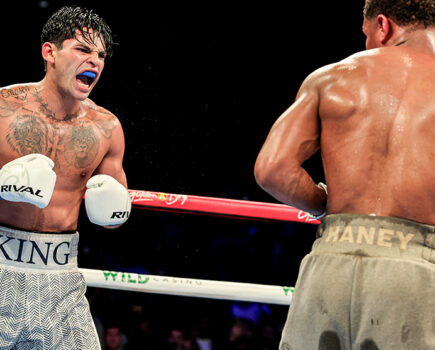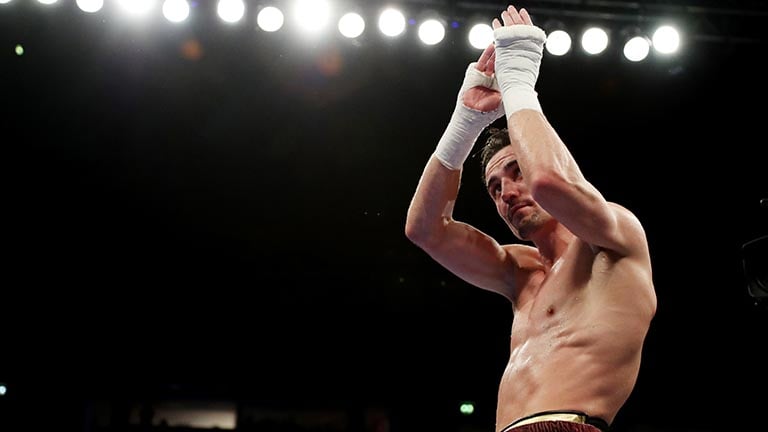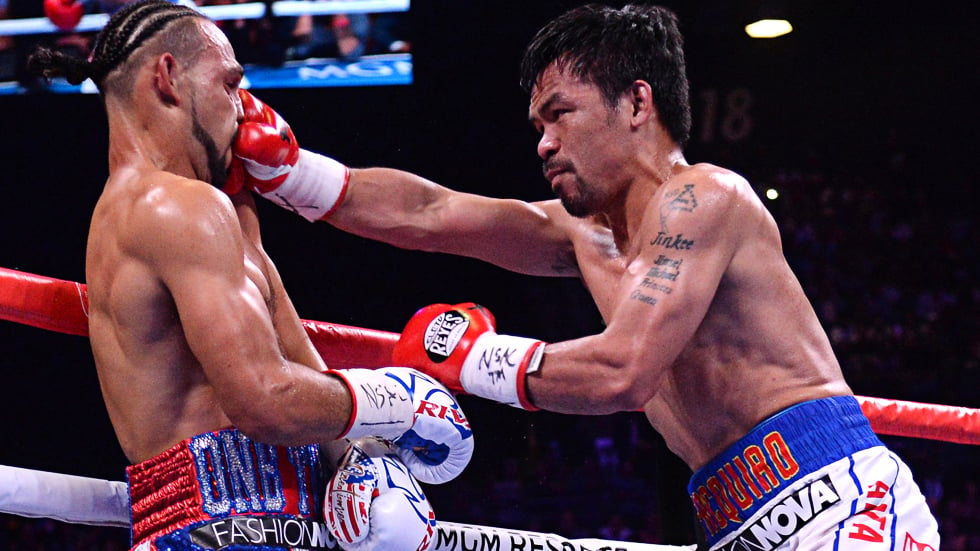TWELVE rounds. Adalaide Byrd. Scorecards. A draw. A rematch. A failed drug test. Clenbuterol. What’s clenbuterol? Contamination. Mexican cows. A second failed drug test. Will it? Won’t it? It can’t. Fight’s off. Slap on wrists. Six months. Mexican independence weekend. Hair sample. Negative. Fight’s moved. Vanes Martirosyan. Two rounds. No chance, drug cheat. Billy Joe Saunders. August 25. No deal. We have a deal. September 15. Golovkin vs. Alvarez II.
The order might not be entirely accurate but that’s the Gennady Golovkin and Saul ‘Canelo’ Alvarez soap opera in a nutshell. More chaotic and mind-numbing in reality and in real time than it seems in 70 words, the saga is probably only halfway through and part two of it, it was announced yesterday (June 13), will go down on September 15, somewhere in Las Vegas.
The news, in the end, came as a relief to many. It came as a relief to the promoters, who have stood by Canelo throughout the entire process, and would like to make an obscene amount of money from his next fight, and it came as a relief to the fighters, for they too would like to capitalise on this dirtiest of boxing rivalries.
Then there are those on the periphery for whom this news came as a relief. People like Adalaide Byrd, for instance, the ringside judge who somehow scored the first fight in Alvarez’s favour, and thus generated a draw and motive for a second fight, and anyone in control of a sanctioning body rallying behind Alvarez in his moment of need. For these men and women, news of Golovkin vs. Alvarez II being signed was every bit as joyous a moment as hearing Michael Buffer announce “This fight is a draw…” back in September of last year.
For those with a conscience, however, and those without any kind of investment – be it emotional or financial – in the franchise, the rematch will no doubt trigger a wave of conflicting feelings.
It remains, after all, a tremendous match-up. There can be no questioning that. Regardless of how we got here and who cheated on who, Golovkin and Canelo are still two of the biggest and most exciting stars in the sport and will always be watchable no matter the opposition. Moreover, their first fight, in September 2017, wasn’t exactly a dud.
These points were hammered home to me in March, when I first wrote about Canelo and clenbuterol and Sheffield trainer Dominic Ingle decided to begin our interview with a simple few questions directed my way.
“Did you watch the first fight (between Golovkin and Alvarez)?” he said.
“Yes.” I replied.
“Was it a good fight?”
“Yes.”
“Did you enjoy it?”
“Yes.”
“Would you watch the rematch?”
“Yes.”
“Right.”
As cryptic as this line of questioning seemed, Ingle’s suggestion was that the pair’s first fight, while now tarnished to a certain degree, would still be remembered as a good, competitive one, and that there was no reason why the rematch wouldn’t follow suit – perhaps only this time giving us a more conclusive finish.
What he also suggested was that a fight is just a fight until we hear otherwise – which is to say, until we learn one of the two combatants has failed a drug test, or in some way sullied the so-called purity of the fight. Until that moment, until we’re told the meat has gone bad, we will view it only as entertainment and judge it as such.
Was it a good fight? Yes. Did you enjoy it? Yes.
For us, the oblivious and naïve, those questions and answers are typically all that matter, and for as long as this remains the case, fighters who have knowingly – or unknowingly – taken performance-enhancing drugs will be able to commit the crime, serve their time, and then get back to earning a living from the very sport they have knowingly – or unknowingly – brought into disrepute.
They continue not because they’ve reformed or learnt their lesson but because boxing, by its very nature, is a simple beast and those who follow the sport – the bloodthirsty, the thrill-seekers – are similarly simple in their pleasures.
We like fights. We like people hitting each other. Ideally, we’d rather they were clean in the process, if only to somehow make the violence, you know, a bit more socially acceptable, but if it so happens that one or both deceive the so-called code, this small matter of decency can be overlooked on the proviso that the fighter is entertaining – read marketable for promoters – and their fights are enjoyable.
It’s for this reason incompetent referees and judges – I’m looking at you, Adalaide – are far tougher to forgive than performance-enhancing drug cheats. Why? Because officials give us nothing. They get things wrong, they mess up, they cheat. That’s all par for the course. But what do we get in return? Silence. That’s all. They don’t even have the decency – or freedom – to explain their incompetence.
Fighters, on the other hand, are the very reason we are attracted to this sport. They fight. They entertain. Without them, there is no sport. No fun. No point to it all.
Confession: some of my favourite fighters over the years have, at one time or another, been caught taking performance-enhancing drugs. They may or may not have taken them knowingly, they may or may not have served a ban, and the drugs may or may not have helped them produce some of their most thrilling and impressive performances (the sort you and I watch again and again, despite the knowledge that they, and perhaps even their opponent, weren’t necessarily clean or recovering between training sessions the old-fashioned way). But they are heroes of mine and they are also drug cheats. If I didn’t know it back then, I know it now.
Now, given the increase in failed tests, and the greater knowledge of what used to slip through the net during the Wild West years (when testing was virtually non-existent), it would be remiss of anyone to assume their heroes were more Clark Kent than Superman.
Which is why, when approaching the big fights, you’re left with a choice. You either accept plenty of the great ones weren’t or aren’t clean, and that many of the great fights weren’t or aren’t fair, or you simply find another sport, one likely to be every bit as tainted as the one you just condemned.
This doesn’t make it right, no. Nor should it mean a fight like Golovkin vs. Canelo II is embraced with open arms and celebrated the way their dreamy first one was last year. But it should certainly be enough to remove from your mind any feeling of guilt or uneasiness that pertains to a five-star fight with one-star morals. Because, honestly, this fight, Golovkin vs. Canelo II, isn’t all that different to the many other great super-fights that have happened and been lauded over the years.
The only difference is now we know things we didn’t back then.






